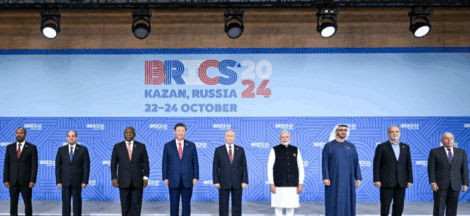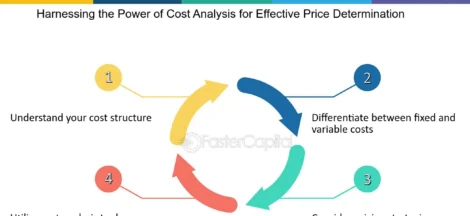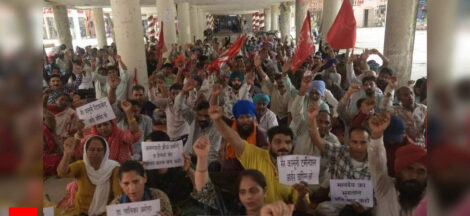With voters remaining lukewarm to Narendra Modi’s “Abki Par 400 Paar” campaign slogan, the prime minister’s chief lieutenant, Union home minister Amit Shah has started reaching out tothe smaller parties, apart from the official NDA allies, to help Modi form the government for a third consecutive time. Shah has conveyed it to his state leaders and chief ministers of the BJP ruled states to ensure that the voters come out in large numbers to prop up the voting percentage of the ruling party at the centre.
The decline of the polling percentage during the two earlier phases, especially in the second phase which witnessed a staggering 8 per cent decline in votes polled in comparison to 2019 across the country, has unnerved Modi and Shah. With around 1 crore voters, out of total 16 crores, staying away from voting, the BJP leadership is haunted by the fear that the third phase of polling would be a virtual repetition of the earlier two phases.
The third phase of the elections will be held on May 7 in 94 Lok Sabha constituencies in 12 states. In this phase, states which are crucial for BJP are Bihar (5 seats), Chhattisgarh (7 seats), Gujarat (26 seats), Karnataka (14 seats), Madhya Pradesh (8 seats), Maharashtra (11 seats), Uttar Pradesh (10 seats) and West Bengal (4 seats). SC, ST and OBC voters are dominant in these constituencies.
Incidentally, all the seats in Bihar and Uttar Pradesh going to polls in the third phase have high density of backward and EB castes. The caste structure could be understood from the popular saying: “Rome Pope ka, Madhepura Gope ka [What Rome is for Pope, Madhepura is for Yadavs]”. Besides Madhepura, the other four poll-bracing constituencies are Jhanjharpur, Supaul, Araria, and Khagaria. These areas have been traditionally anti-BJP.
In the ten constituencies in Uttar Pradesh that go to poll in the third phase, OBCs, including Yadavs, Lodhs, and Kachhi/Shakya/Murao communities, are the dominant castes and exert high level of influence as decisive polling factors. Besides, the Muslims are the most potent force demographically. The 10 Lok Sabha constituencies scheduled for polls in this phase include Sambhal, Hathras, Agra, Fatehpur Sikri, Firozabad, Mainpuri, Etah, Budaun, Aonla, and Bareilly. Notably, the first two phases comprised eight seats each.
The third phase marks a significant shift from the Jat belt observed in the initial two phases. In these areas, the Yadav-Muslim equation is quite strong. Incidentally, the Dalits and EBCs have suffered extreme form of upper caste repression. In earlier elections, the BJP managed to win quite convincingly. But the scenario has changed this time. BJP had won seven out of the 10 seats in 2014 and eight in 2019. Jharkhand constituencies will have election in the fourth phase.
The third phase will witness a paradigm shift in the allegiance of the voters. The farmers, Jats and Rajputs are already up in arms against the BJP, especially against Modi. The farmers have been quite angry with him for the ill-treatment and deceit meted out to them by Modi during their movement. They haven’t forgotten the images of elderly farmers being assaulted and even tortured by the police. Earlier, over 700 farmers had died in the year-long agitation. Still, Modi did not guarantee them “legal MSP”. Their demands are yet to be met.
It is the bitter realisation that BJP, especially Modi, is not the first choice of Dalits, poor, OBCs and EBCs, that mass made Modi turn desperate to rope in this big chunk of voters at any cost. The Dalits and EBCs, who were once considered to be the strong support groups of BJP, have shifted their allegiance to INDIA bloc.
RSS, over the years and through its various dalit organisations, has been striving hard to bring them into the Hindu fold. But as the general secretary of the CPI(ML) Dipankar Bhattacharya, [who is in Jharkhand, where the party has fielded its candidate from Koderma] said, the Dalits, tribals and EBCs have realised the futility of associating with the RSS and BJP and they are now fully on the side of the INDIA bloc.
Realising the shift in his Dalit, EBC and tribal base, Modi has now come out with a new slogan: “SC-ST aur OBC ki Sarkar”. Modi, who had started his electioneering with a thrust on communal polarisation and insinuation against Muslims, has now changed the gear midway. Modi after the second phase, has done another spin: focusing on the downtrodden and their welfare.
While thrust on welfarism is going to be new mantra to woo the voters, Shah has indulged in the game of realpolitik. Modi and Shah strongly nurse the view that with RSS cadres and volunteers withdrawing from the electoral battle, they have to use their own instrument to retain the power for the third term. While they have been exploring the possibility of winning smaller parties, Modi has also decided to make a tactical change in the electoral slogan. In his recent rallies in Maharashtra and Rajasthan, he had thrown the new slogan “Garibon ki sarkar” (government of the poor) with audience to respond “Phir ek baar” (once again).
One thing is quite remarkable. Modi has virtually hijacked the five points of the Congress manifesto/NyayPatra. He has been emphasising on: “Vikas ko samarpit sarkar (a government dedicated to development)”; “Yuvaon ko avsar dene wali sarkar (A government that creates opportunities for the youth)”; “Mahilaon ko suvidha dene wali sarkar (A government that gives benefits to women)”, among other catchphrases.
In a late realization, the duo, Modi and Shah, have asked the party leaders to refrain from saying anything about the Constitution. They are sure that push for replacing the current Constitution and instead introducing the Manusmriti as the basis for a new Constitution has alienated the Dalits, EBCs and also a large section of OBCs. The low turnout simply manifests that the call for a high victory margin had sparked anxiety about a possible plan to scrap the Constitution and also abolish reservations.
Though Modi has been repeatedly cautioning this section and alleging that the Congress was out to finish India, the latest developments however show the strategy has indeed boomeranged on the BJP-RSS ecosystem. Increasingly, Indian people have come to disbelieve Modi and his fabricated accusations against the Congress. For the ordinary voters, the five Nyay Patras of Rahul are more tenable and convincing than Modi’s incessant tirade against the Nehru-Gandhis and the Congress.
As in earlier two phases, in the third phase too the turnout is expected to be quite low, notwithstanding Shah issuing directives to his cadres and lower-level leaders. Basically, the task of booth management and taking the voters to the booths have been the primary duties of the RSS cadres and volunteers. However, the RSS cadres continue to maintain a belligerent attitude towards BJP.
All the three main states of Hindi heartland — i.e., Bihar, Uttar Pradesh and Jharkhand — have high levels of RSS penetration. But this time they have been keeping away from the electioneering. They do not feel comfortable in approaching the farmers and others and request them to vote for the BJP.
Modi’s blinkered claim that the Congress would snatch and redistribute the mangalsutras (gold chains) worn by Hindu women to Muslim “infiltrators” in the country has even not been appreciated by the devout Hindus. People are pointing out that workers and poor have had to pawn their mangalsutra under duress to meet their family needs, especially under Covid lockdown. Sources maintain that pawning of gold has not been a new thing. People have been mortgaging gold to meet the financial needs.
According to a RBI data, loans against gold surged by nearly 60% from September 2020 to September 2021 – from Rs 40,080 crore to Rs 63,770 crore. Reason: Modi government did not put enough money in the hands of the ordinary working class. On the contrary, it helped big businesses hoover up public sector banks and industries, airports, shipping ports, railways, among other job-generating public infrastructure. Party sources maintain that the focus on “SC-ST-OBC ki sarkar” was an attempt to counter the Opposition campaign about the BJP planning to end reservations, which has alienated Dalit and tribal voters.
Modi’s blatant lies about Congress agenda incorporated in its election manifesto “to redistribute the Hindu property disproportionately among Muslims who have more children” is also causing serious concern over his real intentions. The claims have been thoroughly debunked as the Congress manifesto does not mention any of the fabrications aired by Modi during his serial violations of the model code of conduct. Senior Congress leader P Chidambaram has retorted: “Modi has imagined a Congress manifesto written by one of his own ghost speech writers.”
Nevertheless, one immense benefit that Modi has rendered to the Congress is that unwittingly or not, he has popularised the chief talking points of the INC’s people-centric, truly welfarist election manifesto. Since Modi has been focussed on badmouthing Congress manifesto, he has done the grand old party a great favour by ensuring his own voter base is made aware of the promises made by Rahul Gandhi and his party, instead of the communal fumes on which the BJP-RSS are running at present. (IPA Service)



